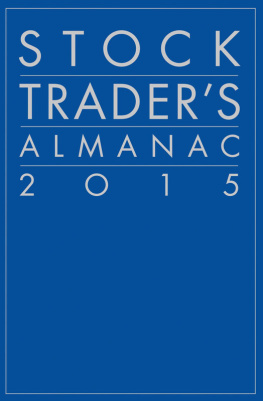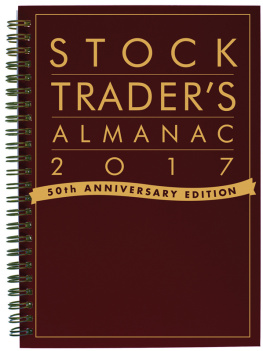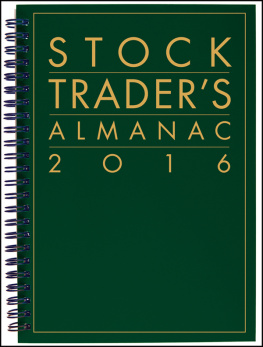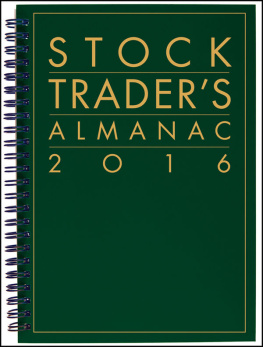Publishing details
HARRIMAN HOUSE LTD
3A Penns Road
Petersfield
Hampshire
GU32 2EW
GREAT BRITAIN
Tel: +44 (0)1730 233870
Email: enquiries@harriman-house.com
Website: www.harriman-house.com
First edition published in Great Britain in 2004
This 7th edition published in 2013
Copyright Harriman House Ltd
The right of Stephen Eckett to be identified as the author has been asserted in accordance with the Copyright, Design and Patents Act 1988.
9780857193278
British Library Cataloguing in Publication Data
A CIP catalogue record for this book can be obtained from the British Library.
All rights reserved; no part of this publication may be reproduced, stored in a retrieval system, or transmitted in any form or by any means, electronic, mechanical, photocopying, recording, or otherwise without the prior written permission of the Publisher. This book may not be lent, resold, hired out or otherwise disposed of by way of trade in any form of binding or cover other than that in which it is published without the prior written consent of the Publisher.
Whilst every effort has been made to ensure that information in this book is accurate, no liability can be accepted for any loss incurred in any way whatsoever by any person relying solely on the information contained herein.
No responsibility for loss occasioned to any person or corporate body acting or refraining to act as a result of reading material in this book can be accepted by the Publisher, by the Author, or by the employers of the Author.
Introduction
Welcome to the 2014 edition of the UK Stock Market Almanac where we celebrate the Efficient Market Theory or rather, the failure of the theory. This book could alternatively be titled, The Inefficient Almanac, as it revels in the trends and anomalies of the market that the Efficient Market Theory says shouldnt exist.
New in the 2014 Almanac
New research
Studies appearing in the Almanac for the first time include:
- FTSE 100/250 Monthly Switching Strategy on the back of research into the comparative monthly performance of the FTSE 100 and FTSE 250, a strategy of switching between the two markets is found that greatly outperforms either index individually.
- Day Of The Week Strategy a strategy exploiting the day of the week anomaly is presented; it significantly outperforms the FTSE 100.
- Monthly Share Momentum Strategy in the previous edition of the Almanac a monthly rebalanced momentum portfolio of FTSE 100 stocks beat the market by an average of 1.1 percentage points per month. This strategy is now applied to FTSE 350 stocks and the outperformance is found to increase to 2.9 percentage points per month.
- Monthly Share Bounceback Strategy this is the opposite of the above momentum strategy; in this case the 10 worst performing stocks were selected for the monthly rebalancing. This strategy not only beat the FTSE 350 but also beat the momentum strategy.
- Monthly seasonality of sectors analysis of the monthly performance of FTSE 350 sectors reveals the strongest and weakest sectors for each month.
- Strong/weak shares by month analysis of FTSE 350 shares reveals those that have performed consistently strongly or weakly for each month for the past ten years. Some shares have risen (or fallen) in a specific month for every year since 2003.
- Average market behaviour by month by taking the average performance of the market on each day of a month it is possible to create a chart of the average performance of the market for that month. This has been done for all 12 months and an aggregate average chart for the whole year produced.
- Good trending shares a system is presented for ranking high-return, low-volatility shares.
- Daily volatility of the stock market is October really the most volatile month?
- Exxon v Shell pairs trading analysis of the monthly comparative performance of Exxon and Shell.
- Correlation between UK and international markets new analysis of the correlation of the UK with six overseas stock markets.
- FTSE 100 v CAC40 analysis of the comparative monthly performance of the UK and French markets.
- Monthly seasonality of the Brazil market January and October are the strongest months for the Brazilian stock market.
- FIFA World Cup how does hosting and winning the World Cup affect stock markets?
- The Scottish Portfolio what would an independent Scotland look like to investors? (Shh, dont mention the banks.)
- Monthly seasonality of gold February, September and November have historically been strong months for gold. And a chart of the FTSE All-Share priced in gold is shown.
- Monthly seasonality of GBPUSD strong months for sterling against the dollar have been April and October.
New features in the diary
Weve added some new features to the month summary pages in the diary:
- Alongside the chart of the performance of the market in the month theres now an average performance chart for the month. This is calculated by taking the average performance of the market on each day in the month since 1985 and using these to create a cumulative performance chart for the month to give an idea of the behaviour of the market over the 22 or so trading days of each month.
- In the summary table, the first row gives the three main statistics that describe the historic performance of the market in that month: the average return, the percentage of months where the return is positive and the ranking among the 12 months.
- In the summary table, the second row displays the sectors that have been historically strong (and weak) that month.
- In the summary table, the third row displays the shares that have been historically strong (and weak) that month.
As in the previous edition, there is a table at the start of each month giving the Sinclair numbers for the FTSE 100, FTSE 250, S&P 500 and Nikkei 225.
Updated strategies and studies
The 2014 Almanac also updates some of the studies of seasonality trends and anomalies that have featured in previous editions, including:
- Quarterly Sector Strategy the strongest/weakest sectors for each quarter are identified and the Quarterly Sector Strategy continues to beat the market.
- FTSE 100/S&P 500 Switching Strategy the strong/weak months for the FTSE 100 relative to the S&P 500 are identified and a strategy of switching between the two markets is found that produces twice the returns of either market individually.
- Low/high Share Price Strategy a portfolio of the 20 lowest priced shares in the market has outperformed a portfolio of the 20 highest priced shares by an average 49.4 percentage points each year since 2002.
- Tuesday Reverses Monday Strategy since the year 2000 market returns on Tuesdays have been the reverse of those on Monday. A strategy using this effect has significantly outperformed the FTSE 100 over this period.
- Market seasonality (day/week/month) December is still the strongest month in the year for the stock market, while September is the weakest. The greatest change from five years ago has been the fall of January from fourth to ninth in the month rankings. Analysis is also updated for weekly and daily performance of the market (Sinclair Numbers).








